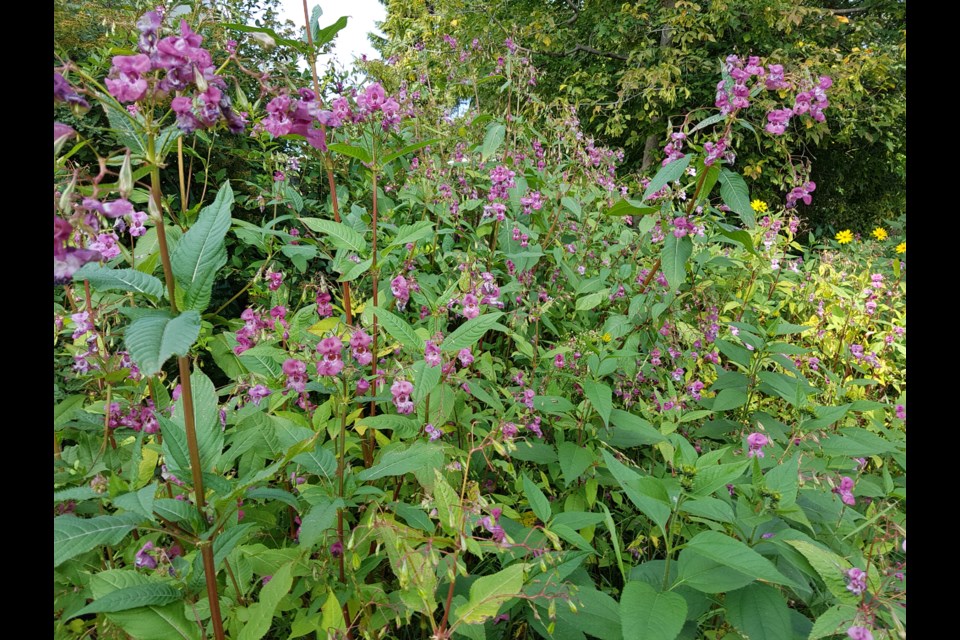THUNDER BAY - It's nice to look at, but it's actually one of the so-called Dirty Dozen, a list of plants that the Ontario Invasive Plant Council has assembled as part of its effort to slow the spread of non-native vegetation around the province.
The Himalayan Balsam, native to Asia's Himalayan mountain area, was introduced in southern Ontario in the early part of the 20th century as an ornamental garden plant.
Hikers are increasingly noticing its presence in Thunder Bay, including along walking paths by McVicar Creek and trails in the wooded area between the Lakehead Psychiatric Hospital and Arundel Street.
While the pink, funnel-shaped flower is pretty, the plant poses a threat to native biodiversity because of its ability to spread quickly and displace other vegetation.
Susan Jaward, a Master Gardener in Thunder Bay, says she first encountered the Himalayan Balsam when she moved to the city years ago. "And I thought, well, this is great, I've got a pond, wouldn't this look nice. So somebody brought me some seedlings and I put them there, and I quickly realized that this is a bad thing."
Jaward said the plant is considerably more pervasive today.
Growing to heights of one to three metres, the Himalayan Balsam has been nicknamed the Touch-Me-Not. It's because its seeds are contained in pods that pop open under light pressure, causing the seeds to disperse over a broad area.
"Small children love to pop them, and they shower all over," Jaward noted.
The Ontario Federation of Anglers and Hunters works in partnership with the Ministry of Natural Resources to increase awareness of the need to control invasive species.
OFAH spokesperson Kate Powell said a single plant can produce up to 800 seeds, leading to rapid reproduction at the outset of the growing season. "It out-competes native species, whose seedlings can't get established because they don't get the level of nutrients or sunlight that they need to grow."
Powell said minimizing its spread involves helping the public learn how to identify the Himalayan Balsam.
"Luckily it has a relatively shallow root system, so pulling up the plant is pretty easy," she said, but cautioned that people need to keep in mind that it can more easily re-establish itself in soil that has been disturbed. "So it's important to re-plant native species, to increase the integrity of that space."
Although Jaward expects the Himalayan Balsam will become a bigger concern around Thunder Bay in the years ahead, she feels some other invasive plants among the Dirty Dozen are currently more worrisome, including the Japanese Knotweed. She describes its root system as capable of growing through concrete and asphalt.
The Thunder Bay Horticultural Society has also been working over the last two years to slow the expansion of another member of the Dirty Dozen, the Garlic Mustard.
Jaward said there have been patches on the walking trail alongside McVicar Creek west of Court Street. "Last year was the first year we did a pull of this weed. This year, we had another go, and found that it was considerably less."
She said it will never be eradicated, but the group's efforts have made a difference.
More information on how to control and how to report invasive plants such as the Himalayan Balsam is available by phoning the Invading Species Hotline at 1-800-563-7711.
Members of the public can also use the interactive application at EDDMaps.org/Ontario.
